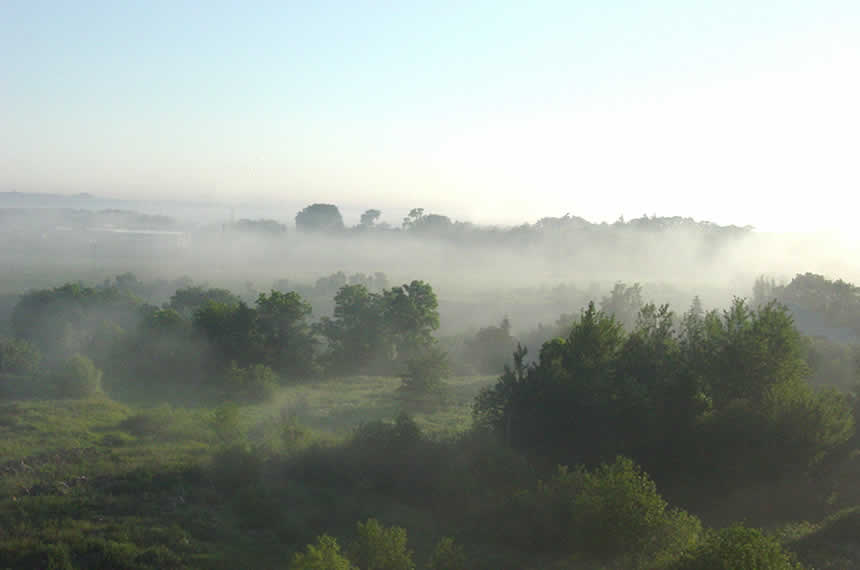Fog is a phenomenon that most people around the world have experienced in one form or another. Occurrences of fog can alter morning commute times, increase the likelihood of traffic accidents or cause difficulties in aviation, particularly when aircraft need to land. Some places of the world are famous for their fogs. The San Francisco Bay area is one such place, wherein the Golden Gate Bridge is often photographed rising above low level clouds. London is another city famous for its fog.
Facts about Fog
- There are four major types of fog: Radiation, Advection, Upslope and Evaporation.
- Dense fog can be defined as instances of the weather where visibility is less than 1/4 mile.
- In 1985, Seattle had 13 consecutive days of heavy fog.
- Fog occurs when water vapor in the air cools rapidly. There must be dust or other particles for the water vapor to bond to.
- In early historical periods of sailing, cannon fire was used as a signal to ships that they were approaching land.
What causes fog to occur?
Three things are required for fog to occur. The first requirement is that humidity levels in the atmosphere are high (there must be a substantial amount of moisture or water vapor in the air). The next is that an event will need to occur that causes the water vapor in the air to condense, or change from a gas to a liquid. This event varies for different types of fog. The third requirement is that solid particles, such as dust particles, must be present in the air for the water vapor to condense around as the air cools.
There are four main types of fog. They are: Radiation Fog, Advection Fog, Upslope Fog and Evaporation Fog.
Safety
Precautions
The best safety precaution that can be made for heavy fog is to allow for additional travel time when driving to a destination. It can be extremely difficult to see in low visibility, and reducing speed will often be necessary.
Inventions that Improve Safety
There hasn’t been substantial progress in assisting automobile drivers through fog. However, throughout history various efforts and several inventions have been made to help ships and boats navigate it. Early inventions utilized sound to help seafaring navigators, as light cannot penetrate through dense fog. One of the earliest attempts made at using sound was firing cannons to guide navigators to shore. Cannons were not very effective, due to the fact that they could only be fired at limited intervals. It was also difficult to determine which direction the sound of the cannon fire was coming from.
As the effectiveness of the use of cannon fire in fog navigation was very limited, efforts moved to the use of bells. In the late 17th and early 18th Century, bells began to be rung at specified intervals to help navigators gauge how far they were from the shore and other ships. The bells on shore were kept in bell houses, similar in many ways to lighthouses. Many smaller boats still utilize bells for signals today.
In modern times, combinations of bells, horns and whistles help navigators signal locations and other messages to each other. Modern navigators also have advanced technologies, such as radio, cell towers and GPS to help them locate coast lines and other boats in dense fog.
Fog in Literature, Film and Culture
- Charles Dickens wrote extensively about London fog (smog) in his novels, one of the more famous examples is “Bleak House”. In the 1800s, smoke from the fireplaces of London was combining with the existent fog to create a smog that was difficult to breathe in.
- “The Fog” is a 1980 horror film about ghosts of sailors whose ship was wrongly sank. The ghosts, seeking revenge, appear as a fog rolling in. The film starred Jamie Lee Curtis.
- In the 1990s TV Series “Wings” starring Tim Daly, numerous references were made to fog around the island of Nantucket. As the show centered around a small airline, the weather sometimes prevented the plane from taking off and landing.


